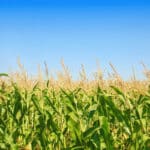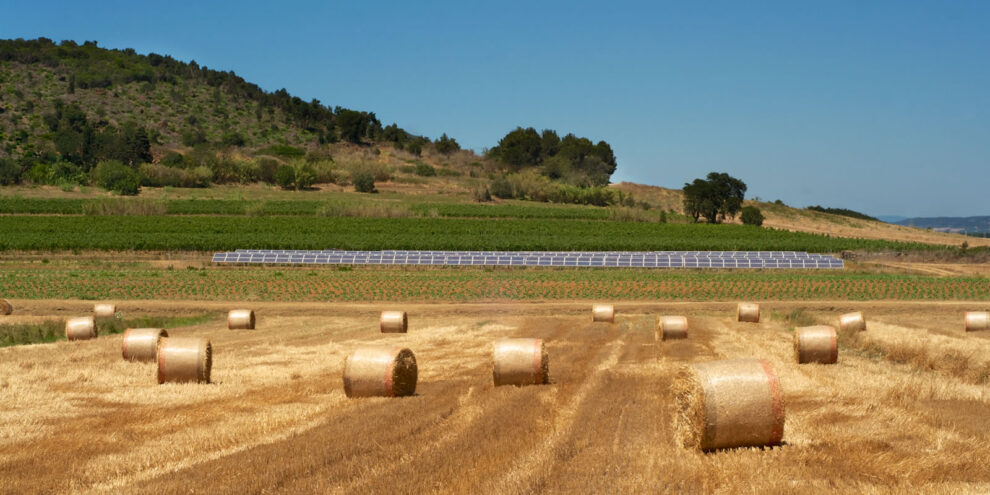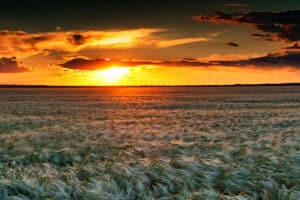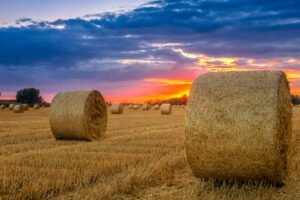Agrivoltaics is a dual land-use approach that pairs solar panels (photovoltaics) with agriculture — or closely related land uses that benefit farmers and ecosystems. This innovative approach has gained significant attention in recent years, as it attempts to solve multiple problems at once. It offers a range of benefits, increasing renewable energy production, increasing sustainable food productions, and preserving land and water resources. Solar energy development can create clean energy, jobs, and other economic benefits in communities. At the same time, the conversion of farmland to solar energy development can raise local concerns that delay or derail projects. This game-changing concept has great potential to address land use conflicts.
1. Optimize Land Use Efficiency
Agrivoltaics allows farmers to use their land for two purposes simultaneously, making the most efficient use of their resources. Instead of having to choose between using their land for agriculture or solar energy production, farmers can do both. The goal is to help farmers diversify their income through renewable energy generation, while keeping land in agricultural use.
2. Better Crop Yields
Tests have shown that, by combining photovoltaic technology with agricultural activity, a higher yield per unit of cultivated area is achieved, with values that are between 20 and 60% higher, depending on the type of crop. This is because the solar panels provide a range of benefits to the crops growing beneath them. They offer shade, which can help to reduce water loss through evapotranspiration and lower temperatures, which can reduce heat stress on the crops. Increased drag due to the solar canopy reduces wind speed below the solar panels, which can prevent damage to plants and reduce water loss through evaporation. Furthermore, the panels can be adjusted to optimize the amount of light that reaches the crops, which can also improve yields.
3. Water Evaporation Reduction
Water scarcity is a significant issue in many parts of the world, and agriculture is a major consumer of water resources. Agrivoltaics can help to reduce water usage in agriculture. In the United States, solar panels can be built to leave enough space for crops to grow at varying heights, also called “solar racking”. The shading provided by the solar panels being above the crops reduces water loss through evapotranspiration. Additionally, solar panels can be used to power irrigation systems, making them more sustainable and reducing the reliance on fossil fuels.
4. Increased Energy Security
Agrivoltaics can help to increase the production of renewable energy, which is crucial for addressing climate volatility. By combining solar energy production with agriculture, farmers can generate a significant amount of renewable energy for local residents without taking up additional land. Agrivoltaics maximizes the potential of solar energy in two ways. It improves the performance of solar panels in hot regions, which means solar farms can get more energy out of the same number of panels. And second, it expands the number of sites where new solar installations can go.
5. Diversification of Revenue Streams
For farmers, one of the biggest perks of agrivoltaics is the extra income. Instead of relying solely on income from agriculture, they can also generate income from the sale of renewable energy. Leasing land to solar companies provides a steady income stream, something farming can’t always rely on. In any given year, a drought, heat wave, or pests can lead to a poor harvest. Price shifts can reduce the value of crops or raise the cost of growing them. The revenue from solar leases helps farmers ride out these ups and downs, giving them added security.
The French company Sun’Agri has developed Agrivoltaics systems that sheltered vineyards from extreme heat conditions and reduced water consumption by the vines from 12-34%. In the Netherlands, the unique mobile solar panels of H2arvester move autonomously on agricultural land to produce renewable electricity without a loss of crop production. Other farmers in the United States are exploring how grazing sheep on solar farms can reduce the need for mowing around the panels while producing quality grassfed livestock. Agrivoltaics is a promising approach to addressing some of the major environmental challenges farmers face, while increasing food production and returns.
This content may not be used or reproduced in any manner whatsoever, in part or in whole, without written permission of LANDTHINK. Use of this content without permission is a violation of federal copyright law. The articles, posts, comments, opinions and information provided by LANDTHINK are for informational and research purposes only and DOES NOT substitute or coincide with the advice of an attorney, accountant, real estate broker or any other licensed real estate professional. LANDTHINK strongly advises visitors and readers to seek their own professional guidance and advice related to buying, investing in or selling real estate.










THIS ARTICLE IS VERY MISLEADING!!!! There are MANY fields in the northeast areas of NC and southeast VA where solar / voltaic panels have been erected…..and depending upon which angle the panels are situated, there is barely room beneath the miles of panels to walk upright, much less plant and maintain a crop beneath them! (unless the thought here is to do all by hand, and then the likely cost of additional required labor will long outweigh the income from leasing your valuable farmland to a private / electric company). As well, these panels ARE maneuverable, however they are typically programmed to move automatically (electric motor driven) to capture the most dircect sunlight to take advantage of the photovoltaic capacity of the panels….NOT so the landowner can impact the amount of sunlight / shade that may be reaching anything growing below the panels!